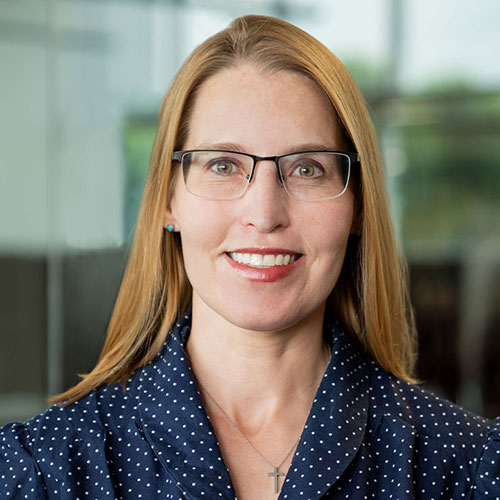ASU journalism professor finds similarities between coverage of World Trade Center Cough Syndrome, COVID-19

Photo from iStock.com
To Sada Reed, news coverage during the early stages of the COVID-19 pandemic felt eerily familiar.
When reporters first began outlining the effects of COVID-19 before much data was available, Reed was reminded of the coverage in the days after Sept. 11, 2001, when journalists reported on rescue workers and survivors who were suffering from an array of respiratory issues in the days after the terrorist attacks, later known as World Trade Center Cough Syndrome.
Reed, an assistant professor at Arizona State University's Walter Cronkite School of Journalism and Mass Communication, also remembered her own personal experience with Sept. 11, when she was stranded in New York City for about two weeks after the attacks while traveling to Scotland to study at the University of St. Andrews.
So it piqued her curiosity to know how those who suffered from World Trade Cough Syndrome would be affected by the newer coronavirus and how journalists would cover the issue.
These questions and experiences served as the basis for her study examining the media coverage of World Trade Cough Syndrome before and after the pandemic, where she kept track of the number and location stories published or aired. Reed also surveyed the common themes associated with those stories in which journalists interviewed 9/11 rescue workers and survivors about COVID-19.
“What I did notice from the stories that I saw was kind of that journalistic sensemaking of ‘This is what we know so far. People with these conditions seem to have a harder time with it. We’re still learning more.’ Early World Trade Center Cough Syndrome pieces were like that,” she said.
Cronkite School Assistant Professor Sada Reed
Reed found there was an exponential increase in World Trade Center Cough Syndrome stories within the first year after the pandemic was declared, after minimal coverage throughout the 18 years between 9/11 and onset of the first COVID-19 cases. The coverage was also more widespread as it moved from ground zero to other areas of the country where 9/11 rescue workers and survivors had moved in the years since the terrorist attacks.
However, Reed was surprised to learn that many people had never heard of World Trade Cough Syndrome or viewed 9/11 as a health disaster and didn’t realize how the pandemic would affect survivors.
“As I started digging more into it, it was the realization of how vulnerable 9/11 survivors really were to COVID-19,” Reed said. “And how that didn’t seem to be something a lot of people around me even knew about, which seems strange to me. It had not occurred to me in all those years, that that’s not how the rest of the country would have viewed it.”
Part of the reason is because the coverage of the respiratory illness was limited to the New York City area and focused on three main themes: survivors’ respiratory problems, the heroism and patriotism of the survivors, and government involvement, she said.
According to Reed’s research, 204 print, radio and television stories were published between 2001 and 2019, but the total increased to 73 stories between 2020 and early 2021 as the topic reemerged.
And while most stories were published in the New York City area, Florida had the second highest percentage of stories covering the topic, with survivors living in all 50 states, according to data Reed cited from the World Trade Center Health Program.
Reed’s research showed six themes that were commonly mentioned in pandemic-era news coverage of World Trade Center Cough Syndrome: survivors comparing and contrasting 9/11 to the COVID-19 pandemic; survivors’ vulnerability to COVID-19; the lack of federal government transparency after 9/11 that led to the survivors’ mistrust of the government during the pandemic; survivors calling for caution and safety protocols; the usage of heroism and patriotism to encourage people to stop the spread and protect survivors; and the 9/11 Victim Compensation Fund.
Reed said she will bring what she learned back to her classroom, showing students how themes from one event influence how journalists construct narratives about other events — events that, on the face of it, may not seem connected to all audience members. She said it’s important for journalists to consider proximity as a news value — not just the geographical distance between their audience and a crisis, but also social or cultural proximity, which is the extent to which their audience can relate to people undergoing a crisis. This would help journalists understand how the issue affects their audience, even in the early stages of a crisis when there’s a lack of data, she said.
“If we’re crafting a news piece and talking about an issue and it’s psychologically distant, our audience is going to be more likely to discount it,” she said. “I can spew statistics at you and tell you all these things, but if you say someone close to you could potentially be harmed by this, that’s a major difference.”
More Law, journalism and politics
Can elections results be counted quickly yet reliably?
Election results that are released as quickly as the public demands but are reliable enough to earn wide acceptance may not…
Spring break trip to Hawaiʻi provides insight into Indigenous law
A group of Arizona State University law students spent a week in Hawaiʻi for spring break. And while they did take in some of the…

LA journalists and officials gather to connect and salute fire coverage
Recognition of Los Angeles-area media coverage of the region’s January wildfires was the primary message as hundreds gathered at…


